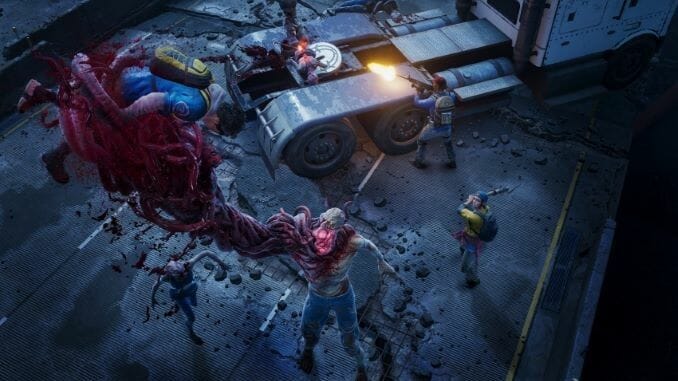Back 4 Blood Updates Left 4 Dead for Today

It’s always interesting to see how a rebooted series adapts to new conventions after a long absence from the games scene. Often, in trying to catch up, too much is forced in at once, alienating the player while betraying the original look and feel of a game. While not a reboot per se, Back 4 Blood, a new multiplayer zombie game made by Left 4 Dead’s original developers Turtle Rock Studios, is not trying to deny its roots. From the name itself to its basic structure, it may as well be called Left 4 Dead 3. But how has that format aged? The last Left 4 Dead game, a sequel released in 2009, came hot on the heels of 2008’s original, making its over 10-year absence from the games scene a little out of character, if not baffling. As zombie games have petered out in popularity, perhaps the lack of Left 4 Dead the past decade was timely. But with a few zombie series still alive and kicking (the sequel to Dying Light releases this upcoming February), there’s clearly still an audience there. What have players come to expect from games now as opposed to when Left 4 Dead was originally released? How has Back 4 Blood adapted to those expectations?
At a glance, Turtle Rock Studios seem to have an instinct for how to make the series work for a new audience. Back 4 Blood is an appeasing mix of the old and new. As with Left 4 Dead, players are put on a team of four that must endure waves of incoming zombie hordes by moving between safehouses, which serve as a rest stop of sorts, allowing the player to stock up on health and ammo before setting out again. Each level is loosely tied together by this premise, pushing the characters from place to place as they seek out other survivors and search for safety. Environmental hazards, from tattletale door alarms to flocks of birds, threaten to tip-off the hordes. Supplies are minimal, disappearing from the inventory between playthroughs; there is no stockpiling or hoarding for those rough combat moments. The player must keep moving forward and take their chances if they’re going to survive.
Of the two most significant changes to this formula, both add variety in a seeming bid to make the game’s natural repetition more palatable in the long term. There were many things that made Left 4 Dead a novelty at the time of its release, but the pacing was where it excelled. With a barebones narrative premise, an impermanent inventory system, and only the simplest weapons and healing items, the experience was not unlike its on-the-rails forefather House of the Dead: don’t stop, don’t look back, just keep moving forward. For a game that focused mostly on surviving waves of zombies, this was suitable. But it could also be very repetitive. Levels were designed more as isolated shooting gallery environments than a storytelling setting, and while there were key events and climaxes to rally around, for the most part, you knew each chapter’s highs and lows.
In Back 4 Blood, this is at least somewhat buffered by the addition of cards, divided into two classes, Active and Corruption. The latter are specific gameplay tweaks that will layer extra challenges on the upcoming campaign level, while the former are awarded for progressing in the game and comprise a greater deck that the player can draw from as they play. Building the deck offers both short-term reward and long-term incentive, as the cards (which are chosen between levels as the player progresses) add boosts to everything from stamina to reloading speed. Some of the more interesting, top-tier ones offer both pros and cons; for example, “Mean Drunk” awards 75% additional melee weapon damage but also disables sprinting. This element not only encourages the player to keep playing, allowing the Active card effects to stack, but also creates strategic quandaries that could be used for challenge runs.
The weapons system, meanwhile, takes cues from that same color-tiered loot system now seen in games like The Division 2 and the Borderlands series, offering a degree of spontaneity in how effective or powerful the weapons are while disabling any chance of relying on them in the long term. From the weapons themselves to the mods that alter their performance, most of them are either purchased randomly at safehouses or found in crates, and ultimately, as the player cannot keep their weapons or their mods, are only temporary. Thus the best configurations can only be found by sticking around for a few levels. Combined with the game’s card system and its minimalist approach to inventory and supplies, the game ensures that each playthrough will probably be a little different each time.
-

-

-

-

-

-

-

-

-

-

-

-

-

-

-

-

-

-

-

-

-

-

-

-

-

-

-

-

-

-

-

-

-

-

-

-

-

-

-

-








































